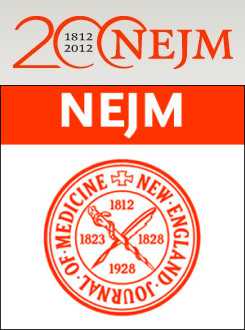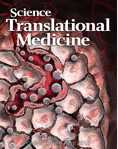NEJM:IL-17可能成为银屑病治疗的靶点
2012-04-10 Craig Leonardi NEJM
近日,国际著名杂志《新英格兰医学杂志》NEJM在线刊登了两项研究成果,证实一些干扰免疫系统分子IL-17的药物能够在12周内显著改善超过75%的银屑病患者的皮肤病损。这预示着一种新型的治疗或将出现在患有中度和重度银屑病患者的视野中。 两项研究均为临床2期试验,通过这些试验研究人员确定了最安全和有效的药物剂量。接下来研究人员将在更多患者中对这些药物进行更长时间的测试。 两项研究的参与者、美国圣路
近日,国际著名杂志《新英格兰医学杂志》NEJM在线刊登了两项研究成果,证实一些干扰免疫系统分子IL-17的药物能够在12周内显著改善超过75%的银屑病患者的皮肤病损。这预示着一种新型的治疗或将出现在患有中度和重度银屑病患者的视野中。
两项研究均为临床2期试验,通过这些试验研究人员确定了最安全和有效的药物剂量。接下来研究人员将在更多患者中对这些药物进行更长时间的测试。
两项研究的参与者、美国圣路易斯大学皮肤病学临床教授Craig Leonardi博士说:“尽管IL-17抑制剂与其他已上市的银屑病生物药物,例如Enbrel和Stelara的功效相似,但这些药物可以为患者提供更多更安全的选择。
“并不是所有药物在每个患者体内都有效,在这些生物药物中存在一种现象称之为‘生物疲乏’,这些药物似乎随着时间的推移会逐渐丧失效力,”Leonardi说。IL-17抑制剂可以成为这些患者的新选择。
银屑病是一种自身免疫性疾病,根据根据美国国家银屑病基金会统计结果在美国约有750万人受累于此病。中度银屑病患者约3-10%的身体皮肤会出现红色的炎症病损。对这些患者,医生通常给予一些生物制剂,包括TNF抑制剂例如Enbrel、 Humira、Remicade 或Stelara治疗。
当前研究测试的分别是一种直接阻断IL-17的药物和另一种阻断IL-17受体的药物。研究将患者分为若干组,分别接受不同剂量的药物或安慰剂治疗。患者每1,2或4周接受一次注射,这主要取决于药物和剂量。两项研究均得到了制药公司的资助。礼来制药公司(Eli Lilly)资助的是直接IL-17抑制剂。安进(Amgen)公司则资助的是IL-17受体抑制剂。
研究人员发现在治疗12周后,直接阻断IL-17的药物ixekizumab改善了约77%的患者(最低剂量)和82%的患者(最高剂量)75%的银屑病斑块。大约38-39%的患者在治疗期间内病损得到了100%的改善。
而另一种称为brodalumab的IL-17受体抑制剂在12周后以中间剂量改善了77%和82%的患者至少75%的病损。以不同的剂量测试,平均76%和86%的患者45%的病损得到了改善。Leonardi表示两种药物的效力相似。
银屑病治疗药物最常见的副作用是上呼吸道的感染和炎症,以及注射部位的反应。在此次试验中,研究人员没有发现ixekizumab的任何严重副作用。在brodalumab试验中严重副作用也较少见。但还是有免疫系统数量降低,严重肾疼痛和易位妊娠的风险。到目前为止,IL-17抑制剂也未显示与心脏病或中风风险增高的相关性。Leonardi说这一点值得注意。因为过去的研究表明Stelara可以增加这些疾病的风险从而引发了一些关注。
从理论上讲,抑制IL-17相比于其他生物制剂可能是一种更安全的治疗选择,因为IL-17被认为是对银屑病负主要责任的分子。事实上,研究人员是在了解到银屑病会抑制这种白介素后才知道IL-17的重要性的。
“你越是具体地针对与银屑病相关的异常之处,你就越有可能导致较低的副作用风险,”皮肤病学家Lawrence Green(未参与最新研究)博士说。
不过Green也审慎地指出IL-17抑制剂也可能像其他银屑病药物一样抑制免疫系统,从而增高感染的风险。Leonardi表示如果在3期临床试验中,IL-17抑制剂被证实有效安全的话,患者将有望在两三年内获得这些药物。此外,研究人员还在研究这些IL-17抑制剂对于风湿性关键的潜在治疗效应。(生物谷Bioon.com)

doi:10.1056/NEJMoa1109997
PMC:
PMID:
Anti–Interleukin-17 Monoclonal Antibody Ixekizumab in Chronic Plaque Psoriasis
Craig Leonardi, M.D., Robert Matheson, M.D., Claus Zachariae, M.D., D.M.Sci., Gregory Cameron, Ph.D., Linda Li, M.S., Emily Edson-Heredia, M.P.H., Daniel Braun, M.D., Ph.D., and Subhashis Banerjee, M.D.
BACKGROUND Type 17 helper T cells have been suggested to play a pathological role in psoriasis. They secrete several proinflammatory cytokines, including interleukin-17A (also known as interleukin-17). We evaluated the safety and efficacy of ixekizumab (LY2439821), a humanized anti–interleukin-17 monoclonal antibody, for psoriasis treatment.
METHODS In our phase 2, double-blind, placebo-controlled trial, we randomly assigned 142 patients with chronic moderate-to-severe plaque psoriasis to receive subcutaneous injections of 10, 25, 75, or 150 mg of ixekizumab or placebo at 0, 2, 4, 8, 12, and 16 weeks. The primary end point was the proportion of patients with reduction in the psoriasis area-and-severity index (PASI) score by at least 75% at 12 weeks. Secondary end points included the proportion of patients with reduction in the PASI score by at least 90% or by 100%.
RESULTS At 12 weeks, the percentage of patients with a reduction in the PASI score by at least 75% was significantly greater with ixekizumab (except with the lowest, 10-mg dose) — 150 mg (82.1%), 75 mg (82.8%), and 25 mg (76.7%) — than with placebo (7.7%, P<0.001 for each comparison), as was the percentage of patients with a reduction in the PASI score by at least 90%: 150 mg (71.4%), 75 mg (58.6%), and 25 mg (50.0%) versus placebo (0%, P<0.001 for each comparison). Similarly, a 100% reduction in the PASI score was achieved in significantly more patients in the 150-mg group (39.3%) and the 75-mg group (37.9%) than in the placebo group (0%) (P<0.001 for both comparisons). Significant differences occurred at as early as 1 week and were sustained through 20 weeks. Adverse events occurred in 63% of patients in both the combined ixekizumab groups and in the placebo group. No serious adverse events or major cardiovascular events were observed.
CONCLUSIONS Use of a humanized anti–interleukin-17 monoclonal antibody, ixekizumab, improved the clinical symptoms of psoriasis. Further studies are needed to establish its long-term safety and efficacy in patients with psoriasis. (Funded by Eli Lilly; ClinicalTrials.gov number, NCT01107457.)

doi:10.1056/NEJMoa1109017
PMC:
PMID:
Brodalumab, an Anti–Interleukin-17–Receptor Antibody for Psoriasis
Kim A. Papp, M.D., Ph.D., Craig Leonardi, M.D., Alan Menter, M.D., Jean-Paul Ortonne, M.D., James G. Krueger, M.D., Gregory Kricorian, M.D., Girish Aras, Ph.D., Juan Li, Ph.D., Chris B. Russell, Ph.D., Elizabeth H.Z. Thompson, Ph.D., and Scott Baumgartner, M.D.
BACKGROUND In this phase 2, randomized, double-blind, placebo-controlled, dose-ranging study, we assessed the efficacy and safety of brodalumab (AMG 827), a human anti–interleukin-17–receptor monoclonal antibody, for the treatment of moderate-to-severe plaque psoriasis.
METHODS We randomly assigned patients with a score of 12 or higher on the psoriasis area-and-severity index (PASI, on which scores range from 0 to 72, with higher scores indicating more severe disease) and with 10% or more of their body-surface area affected by psoriasis to receive brodalumab (70 mg, 140 mg, or 210 mg at day 1 and weeks 1, 2, 4, 6, 8, and 10 or 280 mg monthly) or placebo. The primary end point was the percentage improvement from baseline in the PASI score at week 12. Secondary end points included improvement of at least 75% and at least 90% in the PASI score and the score on the static physician's global assessment at week 12.
RESULTS A total of 198 patients underwent randomization. At week 12, the mean percentage improvements in the PASI score were 45.0% among patients receiving 70 mg of brodalumab, 85.9% among those receiving 140 mg, 86.3% among those receiving 210 mg, 76.0% among those receiving 280 mg, and 16.0% among those receiving placebo (P<0.001 for all comparisons with placebo). An improvement of at least 75% and at least 90% in the PASI score at week 12 was seen in 77% and 72%, respectively, of the patients in the 140-mg brodalumab group and in 82% and 75%, respectively, of the patients in the 210-mg group, as compared with 0% in the placebo group (P<0.001 for all comparisons). The percentage of patients with a static physician's global assessment of clear or minimal disease was 26%, 85%, 80%, and 69% with the 70-mg, 140-mg, 210-mg, and 280-mg doses, respectively, of brodalumab, as compared with 3% with placebo (P<0.01 for all comparisons with placebo). Two cases of grade 3 neutropenia were reported in the 210-mg brodalumab group. The most commonly reported adverse events in the combined brodalumab groups were nasopharyngitis (8%), upper respiratory tract infection (8%), and injection-site erythema (6%).
CONCLUSIONS Brodalumab significantly improved plaque psoriasis in this 12-week, phase 2 study. (Funded by Amgen; ClinicalTrials.gov number, NCT00975637.)
本网站所有内容来源注明为“梅斯医学”或“MedSci原创”的文字、图片和音视频资料,版权均属于梅斯医学所有。非经授权,任何媒体、网站或个人不得转载,授权转载时须注明来源为“梅斯医学”。其它来源的文章系转载文章,或“梅斯号”自媒体发布的文章,仅系出于传递更多信息之目的,本站仅负责审核内容合规,其内容不代表本站立场,本站不负责内容的准确性和版权。如果存在侵权、或不希望被转载的媒体或个人可与我们联系,我们将立即进行删除处理。
在此留言














#IL-17#
43
#IL-1#
39